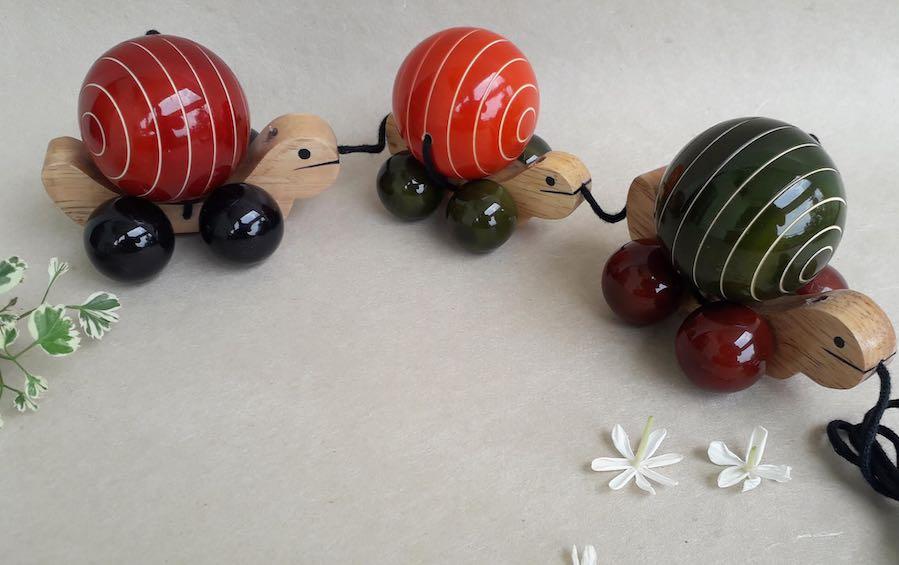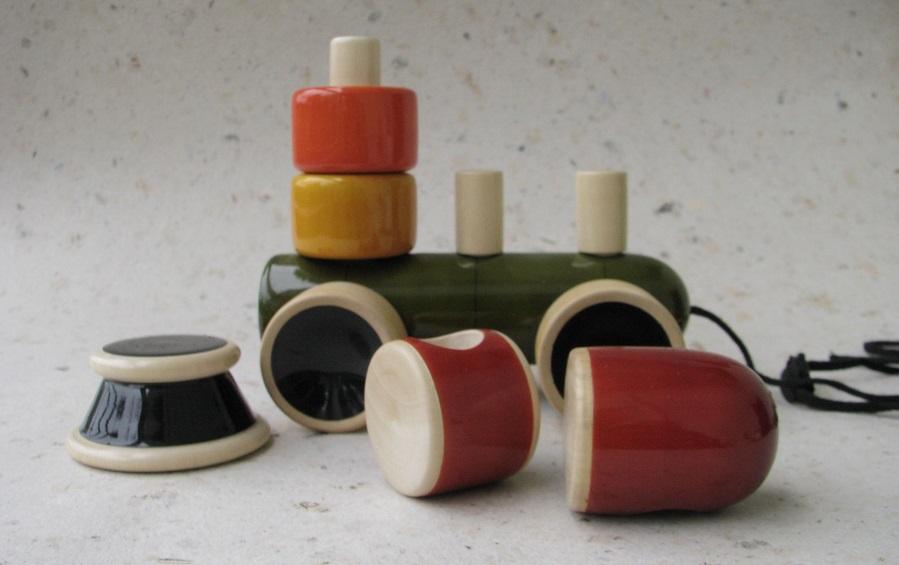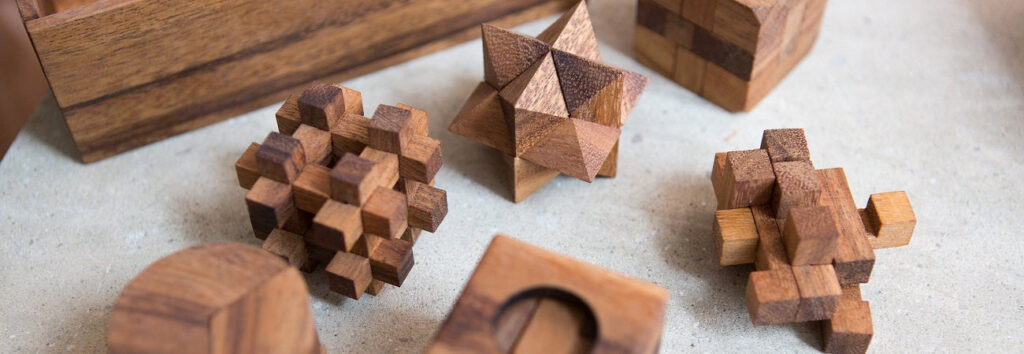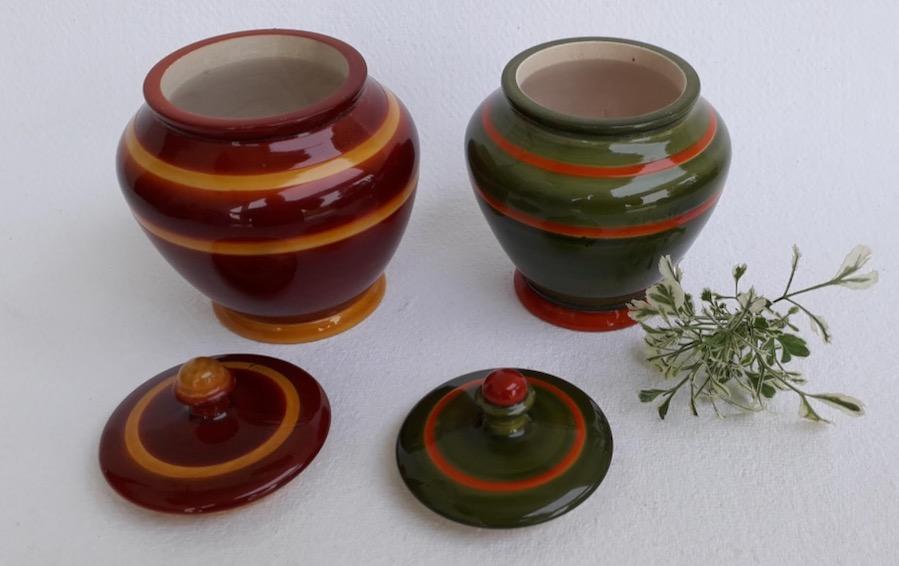Channapatna Toys of Karnataka
Channapatna, a small town located in Karnataka, India, is renowned for its Channapatna toys, which are handcrafted by local artisans. This town, often referred to as “Toy Town,” is situated around 60 km southwest of Bangalore. The traditional craft of making wooden toys and lacquer ware in Channapatna has a history spanning over 200 years. Artisans from Persia were invited centuries ago to train the locals in carving toys, initially using ivory wood and later transitioning to materials such as rubber, cedar, and teak. The craft of Channapatna toys is protected as a geographical indication (GI) under the World Trade Organization.
The process of making Channapatna toys involves procuring the wood, seasoning it, and cutting it into desired shapes according to the design. The toys are then pruned and carved on the lathe, whether it’s a machine-operated or hand-operated lathe depending on the delicacy of the item. Colors derived from vegetable dyes, applied using the lacquerware technique, ensure that the toys are safe for children. Finishing touches are given by filing and sanding the work-piece, followed by coating it with wax for a shiny appearance. Permanent markers are used for detailed features. The end result is a collection of eco-friendly, non-toxic toys with smooth edges, making them safe for children.


The products crafted in Channapatna include a wide range of traditional toys, home décor items, corporate gifts, and utility items. The designs range from traditional to contemporary, showcasing the artisans’ creativity. The use of soft wood and vegetable dyes ensures the products’ safety and eco-friendliness. Channapatna toys are not only beloved by children but are also cherished as collectibles and decorative pieces.
Saharanpur Wood Carving

Saharanpur is a city in India known as the “sheesham wood village” because it’s famous for its talented wood carvers. These artisans have been creating beautiful wooden products for many years and are highly skilled at their craft. They are experts at intricate carving and are especially known for their vine-leaf patterns. They also incorporate brass inlay work, as well as materials like wrought iron, ceramic, and glass, to give a modern touch to their traditional creations.
Woodworking has been a way of life for the people of Saharanpur for a long time. Over 400,000 people in the city are directly or indirectly involved in this craft, often earning daily wages. The majority of these artisans are Muslims, and their designs are influenced by Kashmiri styles. They specialize in a technique called “jaali” or lattice work. The artisans work with different types of wood, such as teak, rosewood, sheesham, and mango wood, known for their durability and beauty. They use brass strips extensively for inlay work, but in some cases, they may also use bone or plastic as alternatives. Adhesive is used to secure the inlay materials, and paint or polish is applied as a final coating to enhance the appearance and protect the wood.
Each artisan specializes in a specific process, such as slicing, carving, inlaying, sanding, polishing, or assembling. By following these steps, they create unique and finely crafted wooden products.
The artisans of Saharanpur create a wide range of wooden products, including furniture, candle holders, screens, tableware, boxes, mirror frames, bookshelves, pen stands, and children’s toys. These products showcase their skill and creativity and are admired for their craftsmanship. The artisans continue to innovate by exploring new materials and creating new designs within these product categories.

Etikopakka Toys from Andhra Pradesh
Etikoppaka is a small village in Andhra Pradesh, India, situated on the banks of the river Varaha. It is known for its unique wooden toys called Etikoppaka toys or Etikoppaka Bommalu. These toys are made with lacquer color and have a long history in the village. They are popularly known as lacquer toys because of the application of a lacquer coating. The toys are made from soft wood and colored with natural dyes derived from seeds, lacquer, bark, roots, and leaves.



In the process of making Etikoppaka toys, a resinous substance called lac is used. Lac is mixed with vegetable dyes during oxidation to create rich and colored lacquer. The artisans in Etikoppaka use ivory wood, which is locally known as “Ankudu Karra,” as the main raw material. They also use different types of lac, such as Rangeen and Kusumi, for the toys. Kusumi lac is considered of better quality and is lighter in color.
The artisans use various tools and technology for crafting the toys. The primary tool is a lathe machine, which is used for designing and polishing the toys. Hand lathe machines were traditionally used, but now electric lathes are more common. Other tools include chisels for shaping and carving the wood, drills for creating holes, and emery paper for smoothing the surface. Fragrant leaves called Mogule aaku are used for final polishing.
The process of making Etikoppaka toys involves seasoning the wood, cutting and shaping it on the lathe machine, applying lacquer coating by hand or with the help of the lathe machine, and finally finishing the products with polishing and inspection. The toys range from tic-tac-toes, trucks, and cars to bowls, spice jars, photo frames, and jewelry boxes. The artisans constantly innovate to create new designs and expand their product range.
Etikoppaka toys are admired for their craftsmanship and are exported worldwide. The village has a rich heritage of toy-making, and the artisans continue to preserve and showcase their traditional craft through these beautiful wooden toys.

Sawantwadi Wooden Toys
Wooden toy making in India has a long history that goes back 5,000 years. One such place known for its traditional craft is Sawantwadi in Maharashtra. Sawantwadi is famous for its wooden toys made from mango wood and its Ganjifa playing cards. The craft is carried out by the Chitari or Chitrakar community, who migrated from Karwada and settled in Sawantwadi. They have been supplying handicrafts to the royal families for generations.
The toys are made by carving or chiseling seasoned mango wood into the desired shapes. The wood is cut into blocks and planks at the local sawmill. Tools like thin blade saws, turning machines, and chisels are used to shape the wood. The pieces are then sanded to smoothen the edges. Oil-based colors are applied to the toys using brushes or spray guns. The colors are mixed with wood primer for better adhesion. Nails and hammers are used to assemble the toy parts, and accessories like plastic wheels, chains, threads, and buttons are added.
The toy-making process begins with creating a sample piece and marking the design on a wooden plank. Multiple pieces are cut according to the design, and the edges are sanded. Colors are applied to the toys using brushes or spray guns, and multiple coats are added for durability. Details like facial expressions are painted once the base coat is dry. The painted pieces are then joined together using nails, and mechanical parts are assembled. Finally, a coat of wood primer is applied for shine and luster.


Sawantwadi wooden toys include fruits, bullock carts, and various animals. They range in size from 4 to 8 inches. The entire process of making a medium-sized toy takes a few days, while completing 100 pieces can take around 15 to 20 days. While most of the steps are done by hand, some tasks like sanding and drilling may involve the use of machinery.


